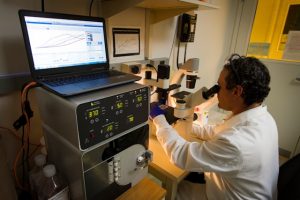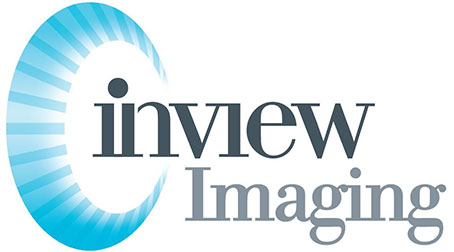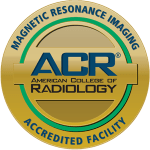Ever wondered what doctors seek in a mammogram? Understanding the key aspects they focus on can demystify this crucial screening process. From evaluating breast tissue density to spotting abnormalities, doctors meticulously analyze mammograms for early signs of breast cancer. Let’s delve into the depths of what exactly healthcare professionals look for in these X-ray images, empowering you with knowledge and awareness.
Key Takeaways
-
Regular mammograms are crucial: Make sure to schedule regular mammograms as recommended by your healthcare provider to detect any potential issues early.
-
Pay attention to key elements: Doctors look for specific indicators like abnormal masses, calcifications, and changes in breast tissue density during mammogram readings.
-
Comparison is key: The comparison of current mammogram results with previous ones is vital for identifying any changes that may indicate the presence of cancer.
-
Early detection saves lives: Detecting breast cancer early through mammograms increases treatment options and improves outcomes significantly.
-
Follow-up is essential: If your doctor recommends further tests or follow-up appointments based on mammogram results, ensure you prioritize these to stay on top of your breast health.
-
Stay informed and proactive: Educate yourself about mammograms, breast health, and risk factors to advocate for your well-being and engage in informed discussions with your healthcare provider.
Understanding Mammograms

Types and Differences
2D mammography captures two images of each breast, while 3D mammography creates a detailed three-dimensional picture. The latter provides clearer images, reducing the need for additional screenings.
Digital mammography is versatile, serving both screening and diagnostic purposes. It allows for easier storage and transmission of images, aiding in accurate diagnoses.
Screening vs. Diagnostic
Screening mammograms are routine checks for early cancer detection in asymptomatic individuals. On the other hand, diagnostic mammogramsz delve deeper into abnormalities found during screening to provide a conclusive diagnosis.
Diagnostic mammography (mammogram) plays a crucial role in investigating suspicious findings from screening tests. It helps healthcare providers determine the nature of abnormalities, guiding further steps in treatment.
Age Recommendations
For individuals assigned female at birth (AFAB), screening mammograms typically start around the age of 40. However, those with high-risk factors may begin screenings earlier as recommended by healthcare professionals.
In contrast, assigned male at birth (AMAB) individuals are advised to consider personal and family history when deciding on mammogram schedules. High-risk factors may prompt earlier mammogram screenings to ensure timely cancer detection.
Key Elements Doctors Look For
Calcifications
Doctors analyze calcifications in mammograms by assessing their size, shape, and distribution. They look for clustered or linear calcifications on mammogram that may indicate abnormal cell growth. Different types of calcifications on a mammogram, such as punctate or coarse, can suggest varying levels of concern regarding breast health. Evaluating calcifications on a mammogram helps doctors identify potential breast abnormalities early on.
Masses
Identifying masses in mammograms involves examining their borders, shape, and density. Benign masses typically have smooth edges and a uniform appearance, while malignant masses may appear irregular with spiculated margins. Mammograms play a crucial role in detecting masses before they become palpable lumps, enabling early intervention and treatment.
-
Pros:
-
Early detection of masses leads to better treatment outcomes.
-
Mammograms help differentiate between benign and malignant masses effectively.
-
-
Cons:
-
False positives from mammograms can lead to unnecessary anxiety and follow-up tests.
-
Some masses may be missed on a mammogram due to overlapping breast tissue.
-
Asymmetries
Breast asymmetries refer to differences in size, shape, or density between the two breasts. Doctors distinguish between normal variations in breast tissue and concerning asymmetries that could indicate underlying issues. When asymmetries are detected in mammograms, further diagnostic tests such as ultrasound or MRI may be recommended to investigate any potential abnormalities thoroughly.
Architectural Distortion
Architectural distortion in mammography signifies a distortion in the normal breast tissue structure. It can be a subtle indicator of underlying breast conditions like radial scars or early stages of breast cancer. Additional imaging techniques such as magnification views or breast MRI are often used to gain a clearer understanding of the extent and nature of architectural distortion.
-
Examples:
-
Radial scars can cause architectural distortion but are typically benign.
-
Early detection of architectural distortion is crucial for timely intervention.
-
Breast Density
Breast density refers to the proportion of glandular and fibrous tissue relative to fatty tissue in the breasts. Dense breasts have more glandular tissue, making it challenging to detect abnormalities on mammograms. Women with dense breasts are at a higher risk of developing breast cancer due to the masking effect of dense tissue. Consequently, supplemental screening tests like ultrasound or MRI may be recommended in addition to regular mammograms for women with dense breasts.
Importance of Comparison
New vs. Old Mammograms
When comparing new and old mammograms, it’s crucial to understand the advancements in technology and image quality. New mammograms utilize digital imaging, offering clearer and more detailed pictures compared to old mammograms that used film.
The significance of comparing current mammograms with previous ones lies in detecting any changes or abnormalities over time. By analyzing differences between new and old mammograms, doctors can identify subtle variations that may indicate potential issues.
Changes over time in mammograms can be indicative of various factors, such as the growth of a lump or alterations in tissue density. These changes are essential indicators of potential abnormalities, prompting further investigation and timely intervention when necessary.
Detecting Cancer Early
How Mammograms Help
Mammograms play a crucial role in detecting breast abnormalities by capturing detailed images of the breast tissue. They can detect early signs of breast cancer, such as lumps or calcifications, before they are even noticeable. Radiologists carefully analyze these images to identify any suspicious areas that may require further evaluation.
-
Key Role: Mammograms aid in early breast cancer detection by identifying abnormalities at their earliest stages when treatment is most effective.
-
Guiding Further Procedures: These screenings help guide additional breast cancer screenings like ultrasounds or MRIs if an anomaly is detected, ensuring comprehensive evaluation.
Accuracy in Detection
The accuracy range of mammography in detecting breast abnormalities is impressively high, ranging from 80% to 90%. However, various factors can influence the accuracy of mammogram results. Factors such as breast density, the experience of the radiologist, and the quality of the imaging equipment can impact the reliability of the findings.
-
Significance of Accuracy: Accurate detection is paramount for timely intervention and treatment. False negatives could delay necessary treatments, while false positives may lead to unnecessary anxiety and procedures.
Summary
Understanding what doctors look for in a mammogram is crucial for your health. By knowing the key elements they focus on, such as abnormalities, changes over time, and comparison with previous images, you can actively participate in your breast health. Detecting cancer early through mammograms significantly increases treatment success rates and improves outcomes. Regular screenings are essential to monitor any changes and catch potential issues early on.
Take charge of your health by scheduling regular mammograms as recommended by your healthcare provider. Stay informed about the process and what doctors look for to ensure you are proactive in maintaining your breast health. Remember, early detection saves lives.
Frequently Asked Questions
What is a mammogram?
A mammogram is an X-ray of the breast used to detect and diagnose breast diseases, including cancer. It is a crucial screening tool for early detection of breast cancer.
How often should women get a mammogram?
Women aged 40 and above are generally advised to have a mammogram every 1-2 years. However, individual risk factors and family history may influence the frequency recommended by doctors.
What key elements do doctors look for in a screen mammography for breast cancer screening?
Doctors primarily look for abnormalities such as masses, calcifications, or distortions in breast tissue. They also assess the density of breast tissue and compare current images with previous ones for any changes.
Why is comparison important in mammograms?
Comparison with previous mammograms helps doctors identify any changes in breast tissue over time. This comparison aids in detecting subtle differences that could indicate the presence of abnormal growths or tumors.
How does early detection of breast cancer benefit patients?
Early detection through mammograms increases the chances of successful treatment and improves survival rates. Detecting breast cancer at an early stage allows for less aggressive treatment options and better outcomes for patients.


